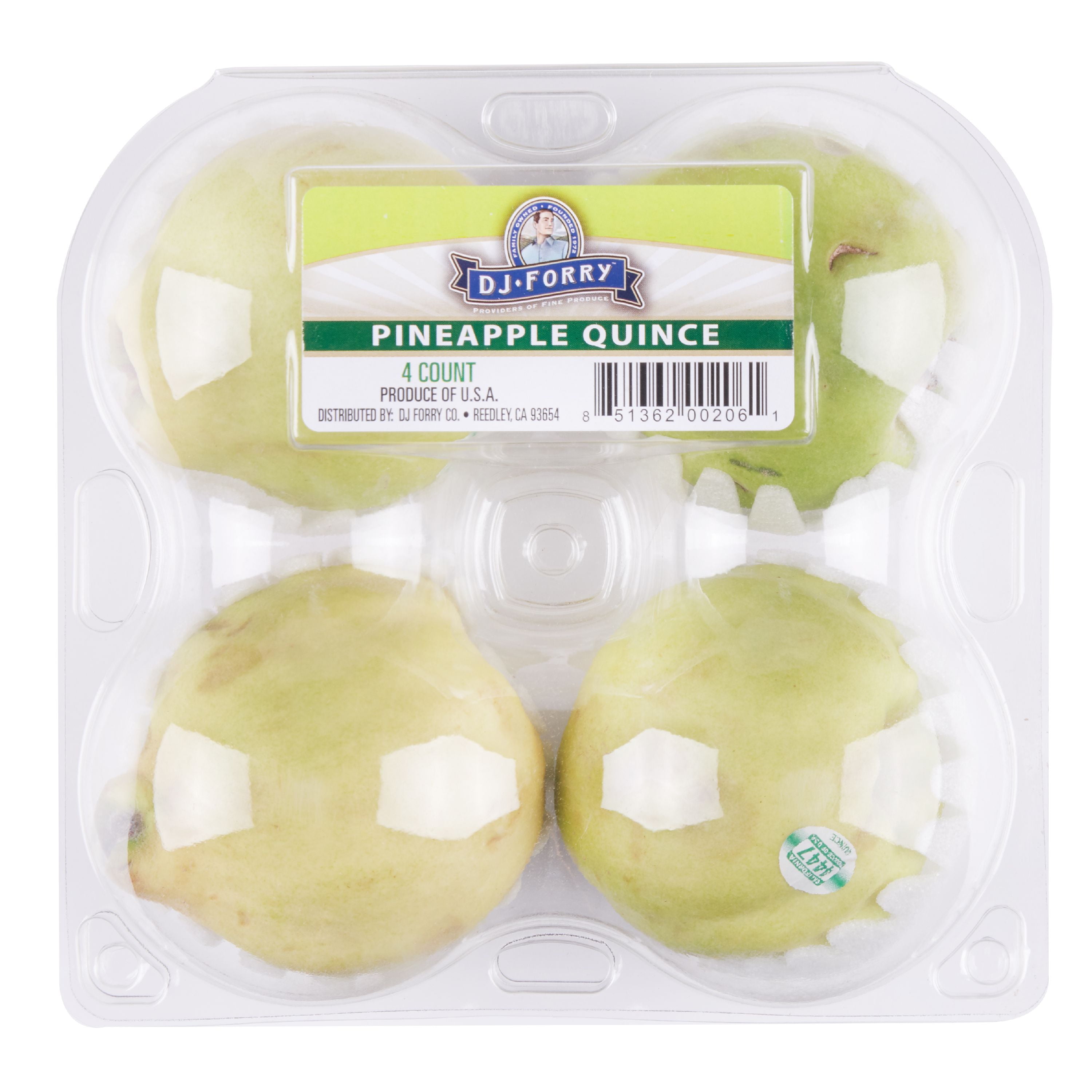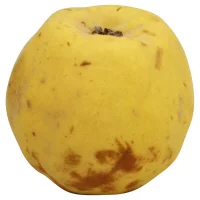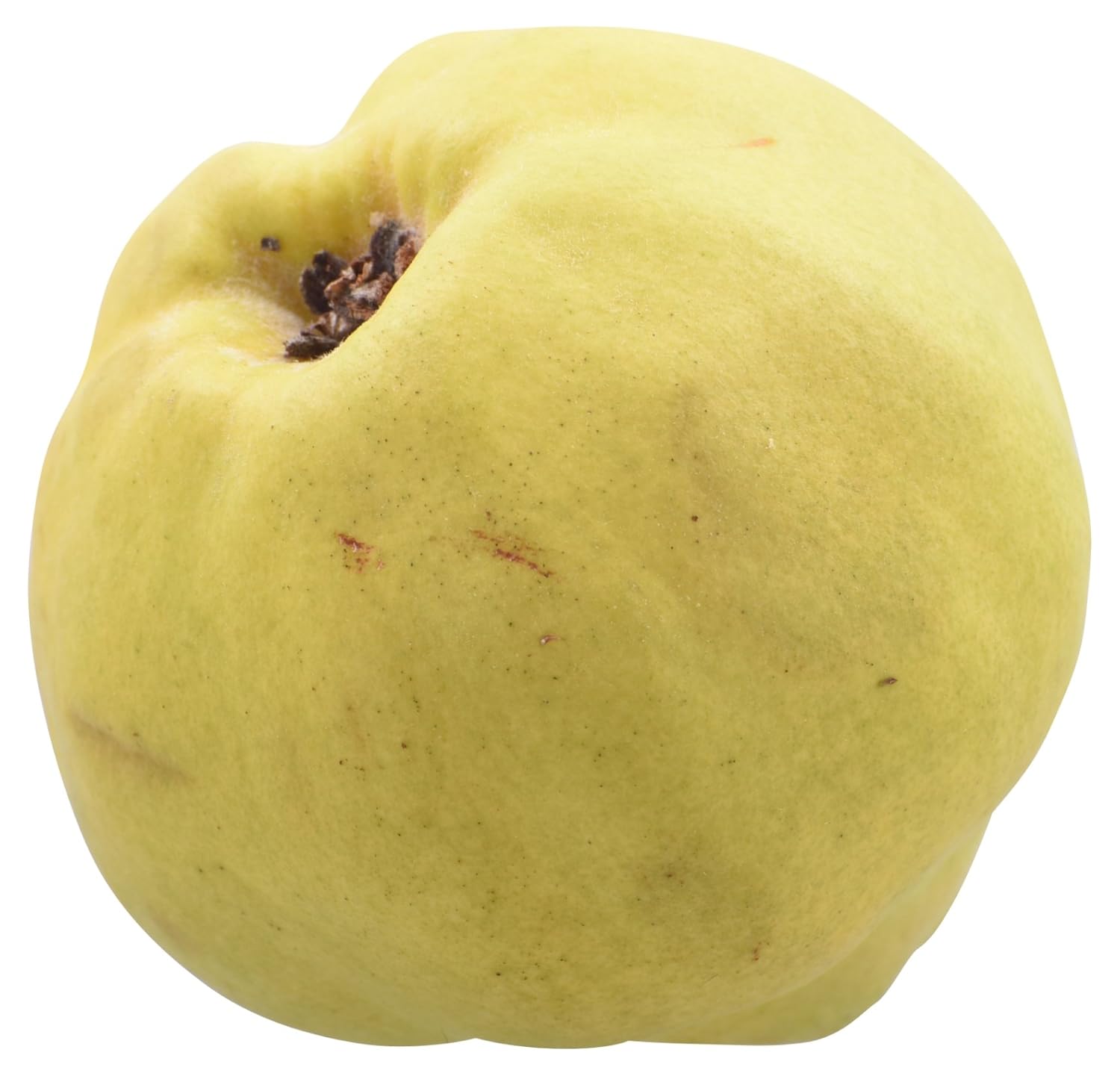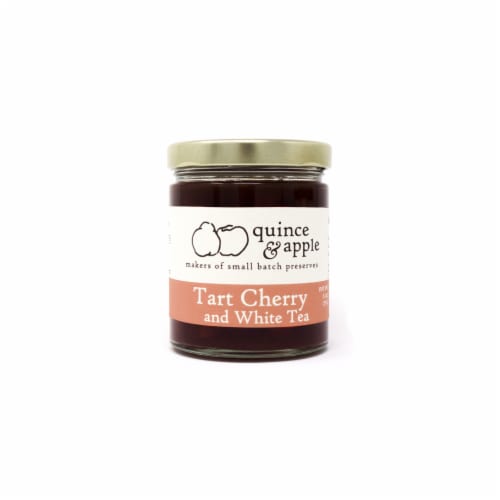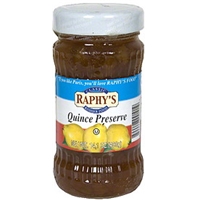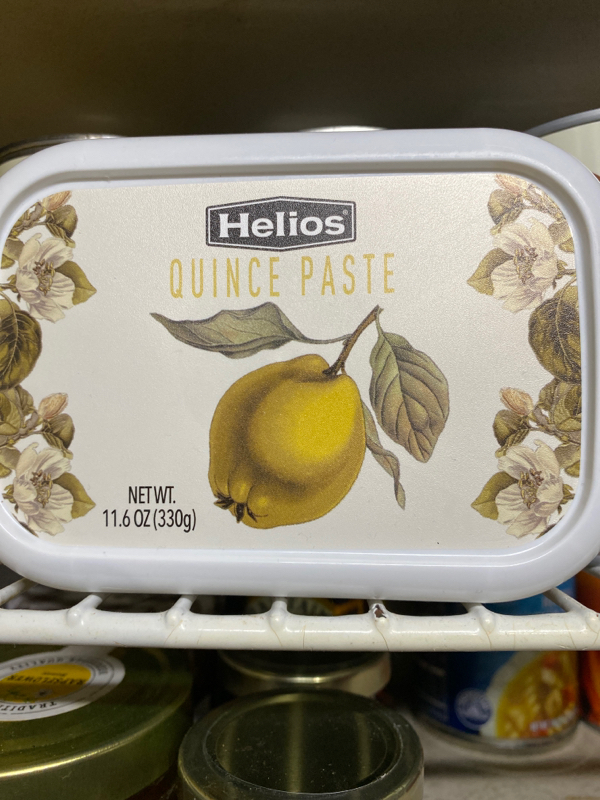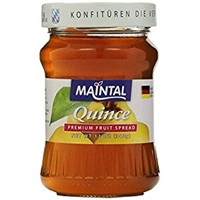DESSERTS
APPETIZERS
BREAKFAST AND BRUNCH
Quince
Quince is a deciduous tree fruit, scientifically known as Cydonia oblonga, native to Southwest Asia and the Eastern Mediterranean regions. It resembles a cross between an apple and a pear, with a slightly fibrous texture and a unique, rich aroma. The fruit's tart and slightly astringent taste makes it less suitable for raw consumption but a star ingredient in a variety of cooked recipes.
When cooked, quince's firm texture and sweet-tart flavor make it an ideal component in preserves, desserts, and savory dishes. Quince paste, also known as membrillo, is a popular European sweet treat, often paired with cheese. Quince is also commonly used to make jellies and fruit sauces, which can serve as delicious accompaniments to roasted meats. The high pectin content in quinces ensures great thickening ability in recipes.
97%
CARBS
1%
FAT
3%
PROTEIN
29 Quince Products
Used In 1 Recipe
Quince Is Frequently Used With
Quince FAQ
Quince is not a common fruit in many kitchens, so it brings certain complexities that can confuse some cooks who are unfamiliar with it. The first issue people encounter when cooking with quince is the assumption that they can eat it like an apple or pear. Unlike these fruits, quince is usually not consumed raw due to its astringent, tart flavor and hard texture. Eating raw quince could lead to a not-so-pleasant culinary experience, giving a false impression about the fruit's potential.
The hardness of the fruit also creates challenges in preparation. Quinces are notoriously tough, making them difficult to peel and core. However, roasting or simmering the quince can solve this problem and allow for easier handling later on.
Another common misunderstanding is that when cooked, quinces retain a vibrant yellow color. However, quinces change color when cooked - turning into a deep reddish-pink hue due to the high tannin content.
To get the most out of quinces, it's best to utilize them in cooked dishes, where their unique flavor and texture can enhance the meal. Quinces' high pectin content makes them great for making thick, glossy jams and jellies, while their sweet and slightly tart flavor works well in both sweet and savory dishes.
Can quince be eaten raw?
Why is it so hard to cut a quince?
Why does quince change color when cooked?
What is quince good for?
How do you core a quince?
What is a substitute for quince?
What does quince taste like when cooked?
How do I peel a quince?
Can I use quince in my meat dishes?
How to make quince jam?
Expiration & Storage Tips
When does quince expire?
Unopened and stored at room temperature, a quince can last for around two weeks. But you want to make sure to consume them when they are fully ripe as they take a long time to ripen after harvesting. Once ripe, their shelf life is about 1-2 days at room temperature. In the refrigerator, they can last up to two months when stored properly in a plastic bag. If you've cooked the quince, leftovers can be safely stored in the refrigerator for up to 5 days. As for frozen quince, it can last up to a year in the freezer.
How do you tell if quince is bad?
You can tell if a quince has gone bad by its look, smell and feel. Quinces that have gone bad often have a dull appearance and lack vibrant yellow color. Moreover, fresh quinces have a rich and appealing aroma, so any off-putting smell is a clear sign that it's time to toss it. In terms of texture, fresh quinces are quite firm to the touch. Any soft spots, wrinkles, or visible mold are all indicators that the quince might be past its prime.
Tips for storing quince to extend shelf life
• Quinces should be stored at room temperature until they are ripe. Place them in a paper bag to speed up the ripening process.
• Once ripe, they can be stored in the refrigerator to extend their shelf life. Wrap them in a breathable plastic bag to keep them from drying out.
• If you wish to freeze the quince, wash it, remove the core, and cut it into slices or cubes. Then, freeze the pieces on a baking sheet before transferring them to a freezer bag. This prevents them from sticking together in the freezer.
• To defrost, simply move them from the freezer to the refrigerator a day before you plan on using them. Avoid defrosting at room temperature as it can lead to texture changes.
EXPIRES WITHIN
8 - 15
DAYS
Health Info
Macros
7g
CARBS
0g
FAT
0g
PROTEIN
Allowed on these diets
LOW FAT
HIGH CALCIUM
VEGETARIAN
PALEO
WHOLE 30
MEDITERRANEAN
LOW CARB
VEGAN
LACTOSE FREE
GLUTEN FREE

